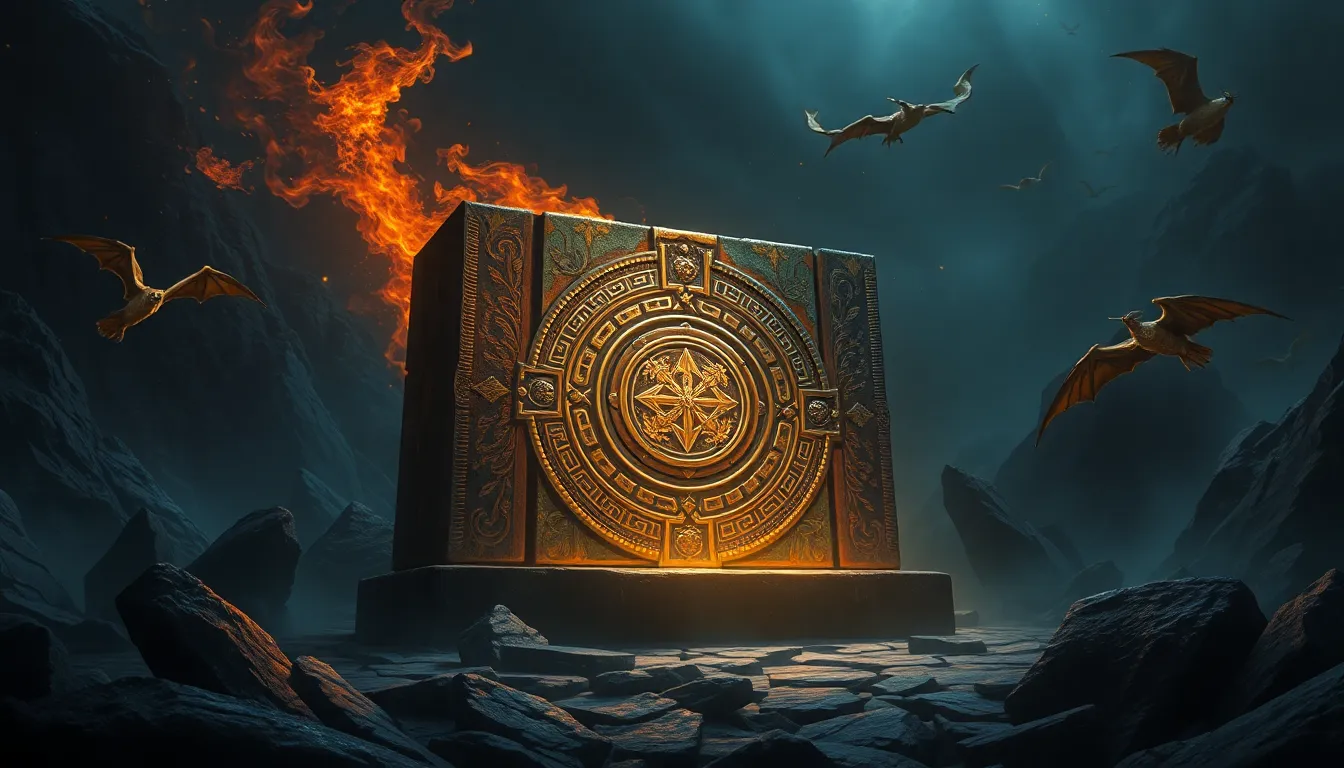The Quest for the Lost Artifact: Legends of Discovery
I. Introduction: The Allure of Lost Artifacts
Lost artifacts have captivated the human imagination for centuries. These items, often shrouded in mystery and legend, evoke a sense of wonder and curiosity, prompting both scholars and adventurers to embark on quests for their discovery.
By definition, lost artifacts are historical objects that have been misplaced, hidden, or destroyed over time. Their recovery can lead to significant insights about past cultures, societies, and civilizations. The historical significance and cultural impact of these artifacts cannot be overstated, as they often serve as tangible links to our collective past.
The quest for discovery, therefore, becomes not just about retrieving objects, but about understanding the narratives that they represent and the lessons they can teach us about human existence.
II. The Origins of Artifact Legends
Legends of lost artifacts often have deep roots in ancient myths and folklore. Societies throughout history have woven tales of remarkable treasures that were lost to time, each story reflecting the values and beliefs of the culture from which it originates.
Notable historical figures, such as explorers and archaeologists, have become entwined with these legends. Figures like Hiram Bingham, who rediscovered Machu Picchu, or Howard Carter, who uncovered King Tutankhamun’s tomb, are often celebrated not only for their discoveries but also for the legends that grew around their quests.
The role of storytelling is critical in preserving these legends, as they are passed down through generations, often evolving and adapting to contemporary contexts while maintaining their core allure.
III. Famous Lost Artifacts and Their Stories
Some lost artifacts have become iconic, each with its own compelling narrative.
- The Ark of the Covenant: A sacred chest described in the Bible, believed to contain the tablets of the Ten Commandments. Its whereabouts remain unknown, sparking numerous theories and expeditions.
- El Dorado: The City of Gold: Initially a myth about a tribal chief covered in gold dust, this story evolved into tales of a city overflowing with riches, leading explorers into the treacherous jungles of South America in search of its fabled riches.
- The Holy Grail: A legendary object said to have mystical powers, the Holy Grail has been interpreted in various ways, from a physical chalice to a symbol of divine grace. Its quest has inspired countless tales of heroism and sacrifice.
IV. The Pursuit: Archaeological Expeditions and Discoveries
The pursuit of lost artifacts has greatly benefited from the advancement of archaeological methods. Techniques such as stratigraphy, radiocarbon dating, and ground-penetrating radar have revolutionized the way archaeologists locate and analyze potential sites of interest.
Throughout history, there have been several significant archaeological expeditions that have led to remarkable discoveries, including:
- The discovery of Pompeii, preserved under volcanic ash for centuries.
- The excavation of the Terracotta Army in China.
- The unearthing of the ancient city of Troy.
Modern technology continues to play a pivotal role in artifact recovery, with satellite imagery and digital mapping allowing researchers to identify potential sites that may have been overlooked in the past.
V. The Role of Treasure Hunters and Adventurers
Treasure hunters and adventurers have played a significant role in the search for lost artifacts. Figures such as Mel Fisher, who discovered the Atocha shipwreck, and Indiana Jones, a fictional character who embodies the archetype of the adventurous archaeologist, have become synonymous with the quest for hidden treasures.
However, the line between exploration and grave robbing can often be blurred, raising ethical questions about the pursuit of lost artifacts. The search for treasure can lead to the desecration of sacred sites and the loss of important archaeological context.
Ethical considerations remain crucial in the search for lost artifacts, with a growing emphasis on responsible exploration and respect for cultural heritage.
VI. Myths vs. Reality: Debunking Artifact Legends
While many legends surrounding lost artifacts are compelling, they are often accompanied by misconceptions. Common myths include the belief that artifacts will bring great wealth or power to their discoverers, leading to unrealistic expectations.
The media plays a significant role in shaping public perception, often sensationalizing stories of lost artifacts and contributing to the myths that surround them. Real-life examples of hoaxes and misidentifications further complicate the narrative, highlighting the need for critical thinking and skepticism.
VII. Cultural Heritage and the Protection of Artifacts
Preserving cultural heritage is vital for future generations. Lost artifacts represent not only historical significance but also the identity and values of cultures worldwide.
International laws and organizations, such as UNESCO and the 1970 UNESCO Convention, work to protect cultural heritage and prevent illicit trafficking of artifacts.
Indigenous communities also play an essential role in artifact stewardship, advocating for the protection of their cultural heritage and involving them in preservation efforts.
VIII. The Modern Quest: New Discoveries and Ongoing Searches
Recent discoveries of lost artifacts continue to capture the public’s imagination. Archaeologists are uncovering new sites and artifacts that provide fresh insights into ancient civilizations.
Notable ongoing searches, such as those for the Lost City of Atlantis or the location of the Ark of the Covenant, remain significant for historians and enthusiasts alike.
Future technologies, including artificial intelligence and advanced imaging techniques, promise to aid in the quest for discovery, potentially leading to groundbreaking findings.
IX. The Impact of Lost Artifacts on Contemporary Culture
Lost artifacts have had a profound influence on literature, film, and popular culture. Stories of treasure hunts and lost civilizations have inspired countless works, from novels to blockbuster movies, creating a lasting fascination with the unknown.
The rise of tourism centered around lost artifacts also impacts local economies, drawing visitors from around the world to historical sites and museums, thereby fostering a greater appreciation for cultural heritage.
X. Conclusion: The Everlasting Quest for Knowledge
The quest for lost artifacts is an ongoing journey of exploration and discovery. It is essential for us to continue seeking knowledge about our past, as these artifacts shape our understanding of history and humanity.
As we look to the future, the call to action for explorers, archaeologists, and enthusiasts remains clear: to pursue the unknown with respect, curiosity, and a commitment to preserving the treasures of our shared heritage.




